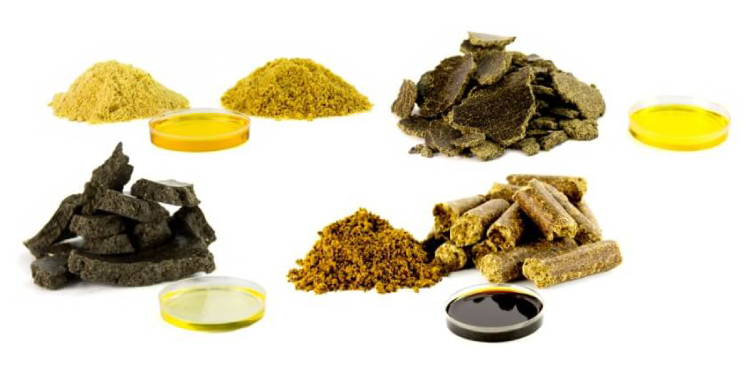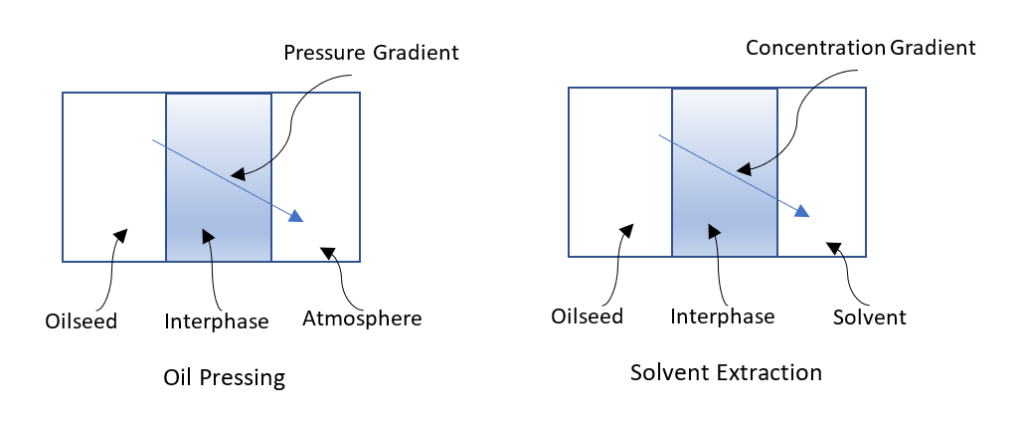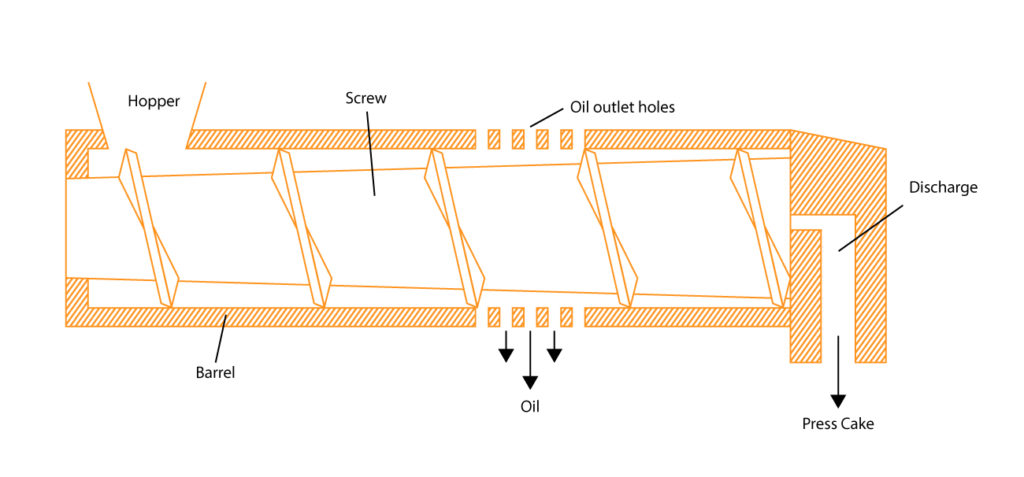Oil Pressing 101

Edible oils obtained from oilseeds such as soybeans and canola are used during the frying foods, and as ingredients in the preparation of pastries and condiments. Edible oils can also be used to improve the texture and flavor of food. Before the oil can be processed into a usable form it is first extracted from the oilseed.
While Super-critical Fluid Extraction (SFE) is finding increasing use in oil extraction, the two most common methods of extraction still remain Mechanical Oil Pressing and Solvent Extraction. Both methods (Oil Pressing and Solvent Extraction), rely on providing a gradient of some sort that encourages the expulsion of the oil contained within the oilseed. Solvent extraction uses a solvent, for example Hexane, to create a concentration gradient (between the seed material and the solvent) that drives oil from within the seed into the solvent. Instead of a concentration gradient, Mechanical Pressing employs a pressure gradient to expel oil from the seed (see Figure 1). A major advantage of the Oil Pressing method, over solvent extraction, is that Oil Pressing is a completely chemical free process.

Figure 1. Driving force for mass transfer in oil extraction.
An Oil Press is the equipment of choice for Mechanical Oil Pressing. The Oil Press consists of a rotating screw contained within a cage/barrel (see Figure 2). The screw works to convey material from the Oil Press inlet to the outlet, while applying pressure to the oilseed material. The cage/barrel has small holes that allow oil to pass through while keeping the solid residual material, confined within the cage/barrel.

Figure 2. Cross-section of an oil press barrel
The amount of oil expressed from the oilseed depends on the oil concentration within the seed and the magnitude of the pressure gradient. The lower the oil concentration, the higher the pressure gradient required. Hence, Oil Presses are designed such that the size of the gap between the screw and the cage/barrel gets progressively smaller as material is conveyed from the inlet of the Oil Press to the outlet. This ensures that the pressure gradient applied to the oil-bearing seed material, increases as the material moves from the inlet to the discharge side of the Oil Press.
The efficiency of the oil extraction is improved if the Oil Press is paired with an Extruder placed upstream of the Oil Press. The Extruder employs the process of Extrusion Cooking to disrupt the cell walls of the oil seed in order to release the oil contained within the cells. This makes it easier to express oil from the oilseed. Insta-Pro ExPress® lines are designed to optimize the efficiency of the oil pressing process.
Pressing oil is an important step in many operations, as the oil can either be kept and added to other ingredients, reducing the costs of buying oil elsewhere, or it can be sold off as is to other markets. For a more detailed look at the requirements, pricing, and any other questions concerning oil pressing, please contact a member of our sales or service team today!



